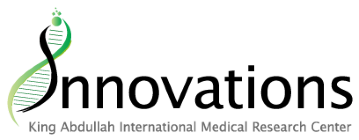
The benefit of revascularization procedures depends on the type of heart disease.CHANAWIT SITTHISOMBAT / ALAMY STOCK PHOTO
Medical procedures to improve blood flow to the heart can help reduce the risk of death for people with severely clogged arteries. But, a large study has found that those with milder signs of heart disease can probably get by with medication, improved diet and regular exercise.
An international study called CONFIRM followed more than 5,500 patients after they received a heart CT scan to diagnose suspected coronary artery disease. Patients then had medical procedures to restore blood circulation. They were either treated with a stent implant or bypass surgery, collectively referred to as coronary revascularization, or they received blood-thinning drugs, cholesterol-lowering pills and other medications. The investigators, including KAIMRC cardiologist Mouaz Al-Mallah who leads the advanced imaging division at the King Abdulaziz Cardiac Center in Riyadh, then tracked their health outcomes for at least five years.
“The benefit of coronary revascularization on survival in stable patients with obstructive coronary artery disease is still controversial,” Al-Mallah explains. Many studies had previously shown that stents and bypass grafts often improve symptoms of chest pain or discomfort, but the data were mixed on whether these interventions were better than drug therapies at preventing heart attacks and boosting patient survival rates. Since the revascularization procedures can be riskier and more expensive than drug treatments, many cardiologists were left uncertain. The CONFIRM study should help inform that decision-making.
In the study, Al-Mallah and his colleagues found that the benefit of revascularization depended on the degree of heart disease. For those with high-risk heart disease—defined as having significant narrowing of critical blood vessels supplying the heart — revascularization helped lower the mortality risk compared to drug treatment both one and five years after the procedure. In contrast, revascularization offered no such benefit among those with low-severity disease over the same period. Intermediate-risk patients who received a stent or bypass had a reduced mortality rate at one year, but the benefit dissipated by the five-year mark.
In light of the results, Al-Mallah advises: “If a patient has high-risk anatomy, then it is better to treat them with revascularization. Intermediate-risk anatomy is still an area of research, and low-risk anatomy can be treated medically.”
Al-Mallah does offer one caveat, though. The CONFIRM study was entirely observational in nature, so “we need to confirm these findings in randomized controlled studies prior to wide adoption.”


